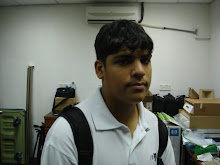The robotics semester has come to an end. In the robotics unit we covered the main areas of robot construction, NXT programming and the variety of sensor usage. Most of the robots that are used in real life have features that depend on what climate, terrain and other sources that a robot will encounter with. These are also found in the NXT robot which has sensors that avoid any obstacle or help your robot to complete a certain task, tires are critical in your robot because it determines the outcome of your experiment, the construction of your robot is also critical and the programming for your robot is also critical.
One of the most important components of a robot is the sensor which helps the robot to communicate with its surroundings and perform action based on feedback's. Sensor reading is when a sensor is reading the intensity and translating it into a reading. The first is the touch sensor its where you press a button so that a circuit is completed and electricity flows. In the NXT there is a sensor block that has three states pressed, released, and bumped these are critical to the robot because it allows you to determine how the robot will react. The second is the light sensor which detects surrounding light and measures its intensity. Values depend on the intensity of light that hits the sensor at the time you read its value. The next sensor is ultrasonic sensor which uses sound waves to detect obstacle. It uses high frequency sounds which bounces off objects and is read by the sensor the time each pulse takes to bounce back determines how far the object is. It uses value to allow the robot to steer away or back up.
The construction of your robot is also critical and the advantages of using TECHNIC construction is unique because instead of using beams for building plates to provide the shell it was built using studless beams. Margins of errors can be tested. Stacking technique which makes your robot heavier but strong. To add, technic beams allow us to build not just 90 degrees but diagonaly. Using traditional beams limits us to do the impossible using technic beams strives us to do the impossible. Gears have many roles and purposes. Gears is what makes your robot go faster, makes your robot have a lot of power and can also make your robot go slow depending on the gears. There are two words you need to know one is the driven gear which is the gear attached to the wheel, driving gear is the gear attached to the motors.
Throughout the semester we also learned about the NXT programming software which consisted of two main palettes. On the complete palletes is where blocks are programmed to make the robot perform actions such as moving, sensor blocks, and math/logic blocks which allowed the robot to compare data it had collected to make a decision. The NXT programming software would then be downloaded onto the NXT brick and the program could then be run.
Throughout the semester we have deepened and appilied our basic knowlegde from math and science and were constantly solving or calculating different algebraic formulas in order to measure and predict distance and speed and gear ratios. Working with different partners needed collaboration to achieve our tasks effectivetively, and collaboration and communication were important concepts throughout the course.
Independent Investigation
-
Choose an Independent Investigation Activity from the Vol 2 CD:
Automated Mining
Patrol Robot
Tree Measurer
1. Print the associated lab workshee...
16 years ago







